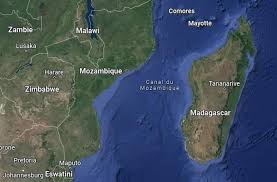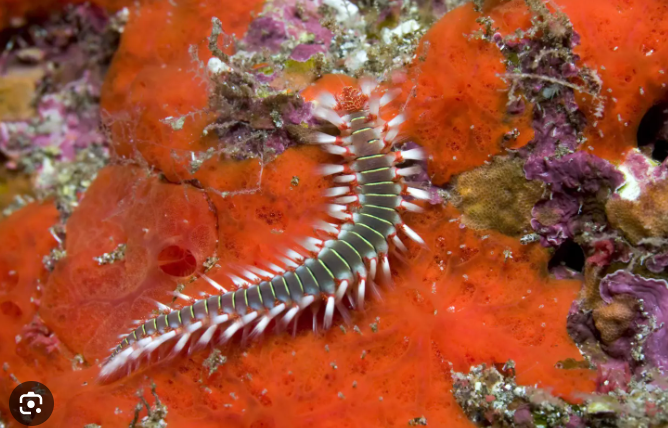The Mozambique Channel is a strategic oceanic corridor linking the coastal ecosystems of Madagascar and Mozambique. Its ocean dynamics directly influence the biogeochemistry (transport and transformation of chemical elements such as nutrients or chlorophyll) of the region, and therefore marine ecosystems.
The regional site avatar will thus need to integrate a modeling of oceanic processes to anticipate ecological variations of large pelagic species, such as tuna.
Complex and poorly understood processes
The Mozambique Channel is a complex oceanic zone, dominated by large anticyclonic eddies. These swirling structures, which can reach up to 200 km in diameter and 2 km in depth, generate powerful currents (1 to 2 m/s). They strongly influence the region’s biogeochemistry, particularly by modulating nutrient distribution. As a result, they impact marine ecosystems (Malauene et al., 2024; Penven et al., 2025). The processes at play are:
- Vertical movements (upwellings) of water masses locally, in the eddies or at their periphery: they bring nutrients from the depths to the surface, thus promoting primary production (phytoplankton). This stimulates the food chain up to top predators like tuna (Ternon et al., 2014). These predators exploit these transitional habitats for feeding, benefiting from conditions created at the heart and periphery of the eddies (Tew Kai & Marsac, 2010).
- The horizontal transport of organic matter and/or nutrients (such as nitrates), from the coasts (where the Zambezi, Pungue, or Limpopo rivers discharge) to the open sea, trapped in the heart of the eddies or transported by filaments; this transport of matter promotes the creation of habitats richer in nutrients.
- Additionally, the dynamics of the eddies would promote ecological connectivity between Madagascar and the African continent (Hancke et al., 2013) through this horizontal transport.
Figure extracted from Penven et al., 2025: Chlorophyll concentration (mg.m-3) and sea surface height (1 red contour/10 cm) for April 16, 2022. A filament (F1) of enhanced chlorophyll and coastal waters is swept offshore by the interactions of R1 with the Sofala bank. Another filament had previously been captured by C1 and spirals in the heart of the eddy.
Figures extracted from Hancke et al., 2013: Trajectory of drifting float 71201 superimposed on sea level anomalies (cm).
Figures extracted from Hancke et al., 2013: Trajectories of drifting floats between the East Madagascar current and the Mozambican coasts.
Figure extracted from Drouet, 2020: Diagram of the biological carbon pump in oceans (after Herndl and Reinthaler, 2013).
Focus on: Aline Arens’ Thesis
On March 25, Aline Arens presented the topic of her thesis, which she started in November 2024 within BRIDGES AVATAR (co-financed by UBO). This thesis aims to better understand the biogeochemical fluxes in the Mozambique Channel.
She is developing high-resolution numerical simulations using the CROCO-PISCES model, which allows coupling ocean dynamics and biogeochemical processes. These simulations are calibrated with in situ and satellite data. Her research focuses on several aspects:
- Modeling coastal nutrient fluxes and their dispersion in the Mozambique Channel.
- The impact of eddies on the distribution of biogeochemical elements.
- Comparing nutrient inputs from different mechanisms (turbulent transport, island mass effect, upwelling).
This work will provide key information for the regional digital avatar developed within BRIDGES AVATAR.
Thesis Directors: P. Penven (HDR), F. Chenillat, S. Pous, F. Nehama, B. Malauene



